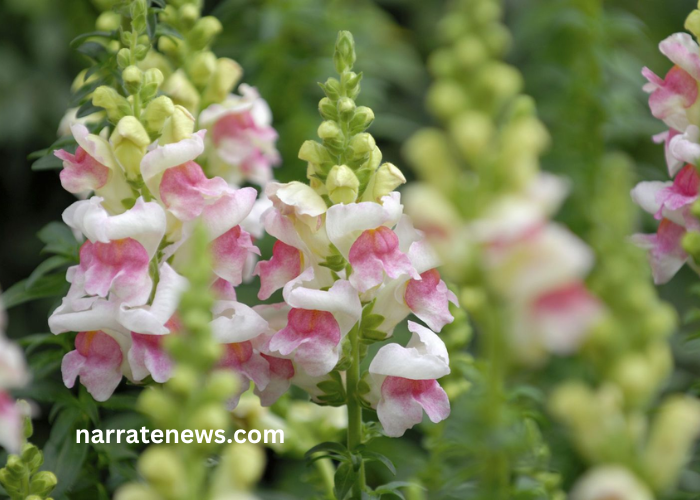
Pink Snap Dragon: A Comprehensive Guide to Growing and Enjoying This Vibrant Flower
Pink snap dragons are more than just a colorful addition to your garden; they’re a symbol of beauty, resilience, and charm. Known for their vibrant pink hues and unique, dragon-shaped blooms, pink snap dragons have captured the hearts of gardeners and flower enthusiasts alike. Whether you’re a seasoned gardener or just starting out, cultivating pink snap dragons can bring a splash of color and a sense of accomplishment to your outdoor space. In this guide, we’ll explore everything you need to know about pink snap dragons, from their origins to their care and how to make them thrive in your garden.
The Origins and History of Snap Dragons
Snap dragons, scientifically known as Antirrhinum majus, have a rich history dating back thousands of years. Native to the rocky regions of Europe, particularly the Mediterranean, these flowers have been cultivated for their beauty and unique appearance. The name “snap dragon” comes from the flower’s resemblance to a dragon’s mouth, which “snaps” shut when the sides are squeezed—an amusing trait that has delighted both children and adults.
The pink variety of snap dragons, in particular, has been selectively bred over time to enhance its vivid color and robust growth. While snap dragons come in a wide range of colors, from pure white to deep red, the pink snap dragon holds a special place in many gardens for its delicate yet striking appearance. Over the centuries, snap dragons have been associated with various cultural symbols, including grace, strength, and mystery.
Botanical Characteristics of Pink Snap Dragons
Pink snap dragons are a sight to behold, with their tall spikes of tubular flowers that bloom profusely throughout the growing season. The flowers typically grow in clusters along the stems, forming a dense display of color. The blooms are often bi-colored, with varying shades of pink that may include hints of white, peach, or coral, adding depth and interest to the garden.
These plants typically reach a height of 1 to 3 feet, making them ideal for garden borders, containers, or as part of a mixed flower bed. The foliage of the snap dragon is equally attractive, with lance-shaped, deep green leaves that provide a beautiful contrast to the bright pink flowers. There are many varieties of pink snap dragons, each offering slightly different shades, flower forms, and growth habits, allowing gardeners to choose the perfect fit for their landscape.
Growing Pink Snap Dragons: A Gardener’s Guide
Growing pink snap dragons can be a rewarding experience, especially when you see their vibrant blooms lighting up your garden. Here’s a step-by-step guide to ensure your pink snap dragons thrive:
- Climate and Soil: Pink snap dragons prefer cool weather and perform best in temperatures ranging from 60°F to 75°F. They thrive in well-drained soil with a neutral to slightly acidic pH (6.0 to 7.0). Before planting, enrich the soil with organic matter, like compost to provide the necessary nutrients.
- Planting: Start snap dragons from seeds indoors 6 to 8 weeks before the last frost, or sow them directly in the garden after the danger of frost has passed. Space the plants about 6 to 12 inches apart to allow good air circulation and prevent fungal diseases.
- Watering and Fertilizing: Keep the soil consistently moist, especially during dry spells, but avoid overwatering as snap dragons are prone to root rot. Fertilize with a balanced, slow-release fertilizer at the time of planting and again during the growing season to encourage continuous blooming.
- Care Tips: Deadhead spent flowers regularly to promote new blooms and prevent the plant from going to seed too early. Mulch around the plants to conserve moisture, keep the roots cool, and suppress weeds.
Pink Snap Dragons in Landscape Design
Pink snap dragons are versatile plants that can enhance any garden design. Their upright growth habit and striking color make them ideal for garden borders and beds, where they can stand out against a backdrop of green foliage.
In a cottage garden, pink snap dragons add a touch of romance and charm, especially when paired with other classic flowers like roses, lavender, or daisies. In a more modern or minimalist garden, they can be used to provide a pop of color against neutral tones or to create a focal point.
For those who love themed gardens, consider creating a pink garden by combining pink snap dragons with other pink-flowered plants such as peonies, pink hydrangeas, and pink tulips. This monochromatic theme can create a harmonious and visually pleasing space that is both elegant and inviting.
The Symbolism and Meaning of Pink Snap Dragons
In the language of flowers, snap dragons carry deep symbolism. Pink snap dragons, in particular, are associated with sweetness, grace, and admiration. They are often used in floral arrangements to convey gentle emotions, making them a popular choice for gifts and celebrations.
Historically, snap dragons have also been linked to protection and warding off evil. In some cultures, it was believed that snap dragons placed near the home would protect against curses and bring good fortune. Whether or not you believe in these legends, there’s no denying the positive impact that these beautiful flowers can have on your mood and your garden.
Common Pests and Diseases Affecting Pink Snap Dragons
While pink snap dragons are generally easy to grow, they are not immune to pests and diseases. The most common issues include aphids, spider mites, and fungal diseases like powdery mildew and rust.
To prevent these problems, keep an eye on your plants and act quickly if you notice any signs of trouble. Use insecticidal soap or neem oil for pest control, and ensure your plants have good air circulation to reduce the risk of fungal infections. If necessary, apply a fungicide specifically designed for use on snap dragons.
Pink Snap Dragons in Floral Arrangements
Pink snap dragons are a florist’s delight, thanks to their long stems and vibrant color. They make excellent cut flowers and can be used in both formal and casual arrangements. When cutting snap dragons for a bouquet, do so early in the morning when the blooms are freshest, and remove any leaves that would be below the waterline to prevent rot.
Snap dragons pair beautifully with roses, lilies, and other traditional flowers. They can also be used in more whimsical arrangements with wildflowers or as part of a mixed bouquet to add height and texture. To extend their life in a vase, change the water daily and trim the stems slightly every few days.
The Role of Pink Snap Dragons in Attracting Pollinators
One of the benefits of growing pink snap dragons is their ability to attract pollinators such as bees, butterflies, and hummingbirds. The unique shape of the snap dragon flower, with its “mouth” that opens and closes, makes it particularly appealing to these creatures.
Creating a pollinator-friendly garden with pink snap dragons can help support local ecosystems and encourage biodiversity. Plant them alongside other pollinator-friendly plants to create a haven for these important insects and birds.
Propagating Pink Snap Dragons
If you want to grow more pink snap dragons, propagation is a great option. You can collect seeds from your existing plants by allowing some flowers to go to seed. Once the seed pods have dried, carefully collect the seeds and store them in a cool, dry place until you’re ready to plant them.
Alternatively, you can propagate snap dragons through division. To do this, a mature plant must be divided into smaller portions, each with its own root system, and then replanted. This method is best done in the spring or fall, when the plant is not in full bloom.
Sustainability and Eco-Friendly Practices
As with any gardening, growing pink snap dragons can be done in an eco-friendly way. Opt for organic fertilizers and pest control methods to reduce your environmental impact. Composting and mulching are also excellent practices that benefit both your plants and the planet.
Choosing heirloom or native varieties of snap dragons can help preserve genetic diversity and support local ecosystems. By growing your own flowers rather than relying on store-bought ones, you’re also reducing the carbon footprint associated with transporting commercial flowers.
Seasonal Care for Pink Snap Dragons
Snap dragons are cool-season plants, meaning they thrive in the spring and fall but may struggle in the heat of summer. To keep your pink snap dragons blooming as long as possible, plant them early in the season and provide some afternoon shade if you live in a hot climate.
In colder regions, snap dragons can often survive a light frost and may even overwinter if the conditions are right. Mulch heavily around the base of the plants in the fall to protect the roots and encourage them to come back in the spring.
Pink Snap Dragons in Different Regions
Pink snap dragons can be grown in a variety of climates, but they do best in regions with mild temperatures and well-drained soil. In areas with hot summers, consider planting snap dragons in partial shade to protect them from the intense midday sun.
Gardeners in cooler climates may find that snap dragons perform better as early spring or late fall flowers, while those in warmer regions can enjoy their blooms well into the summer. Adjust your care practices based on your local climate to get the best results from your pink snap dragons.
Conclusion
Pink snap dragons are a delightful addition to any garden, offering vibrant color, unique beauty, and a host of symbolic meanings. Whether you’re planting them in a border, using them in floral arrangements, or simply enjoying their cheerful presence in your yard, pink snap dragons are sure to bring joy and beauty to your space. With the right care and attention, these flowers will reward you with stunning blooms season after season.
FAQs
How long do pink snap dragons typically bloom?
Pink snap dragons usually bloom from spring through early summer, with the possibility of a second bloom in the fall if properly cared for.
Are pink snap dragons annuals or perennials?
Snap dragons are technically perennials but are often grown as annuals. In mild climates, they may survive the winter and return the following year.
Can I grow pink snap dragons in containers?
Yes, pink snap dragons can thrive in containers. Ensure the container has good drainage and use a well-draining potting mix. Regular watering and fertilizing are key to their success in pots.
How can I encourage more blooms on my pink snap dragons?
Deadheading spent flowers and providing regular fertilization can encourage more blooms. Ensure they are planted in an area with full sun to partial shade for optimal growth.
What is the best time of year to plant pink snap dragons?
The best time to plant pink snap dragons is in the early spring or fall, depending on your local climate. They prefer cooler temperatures for germination and growth.


